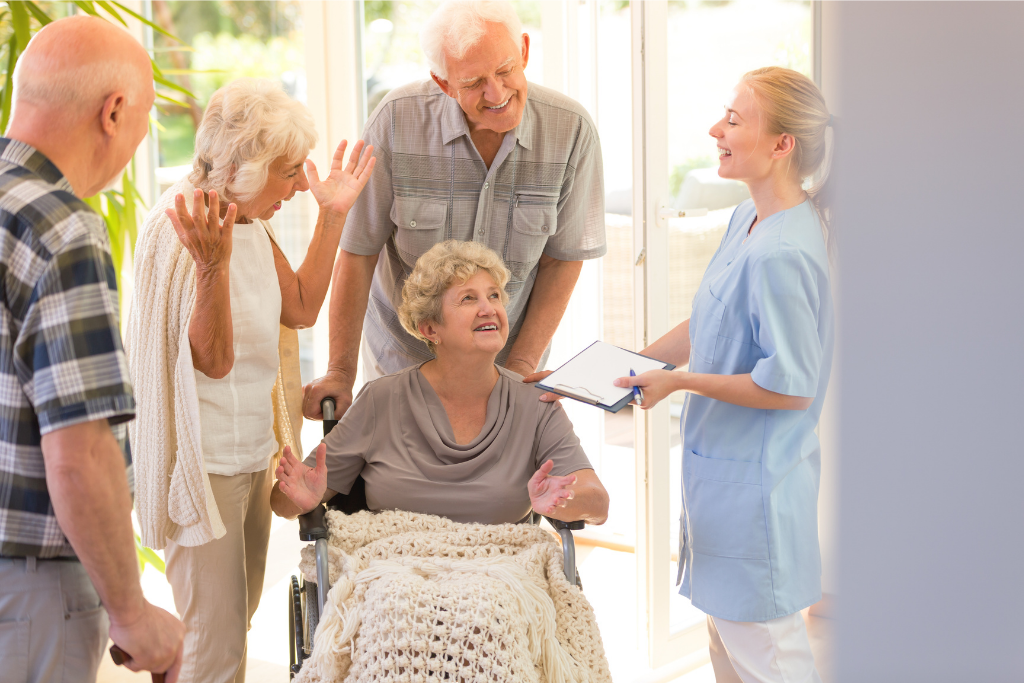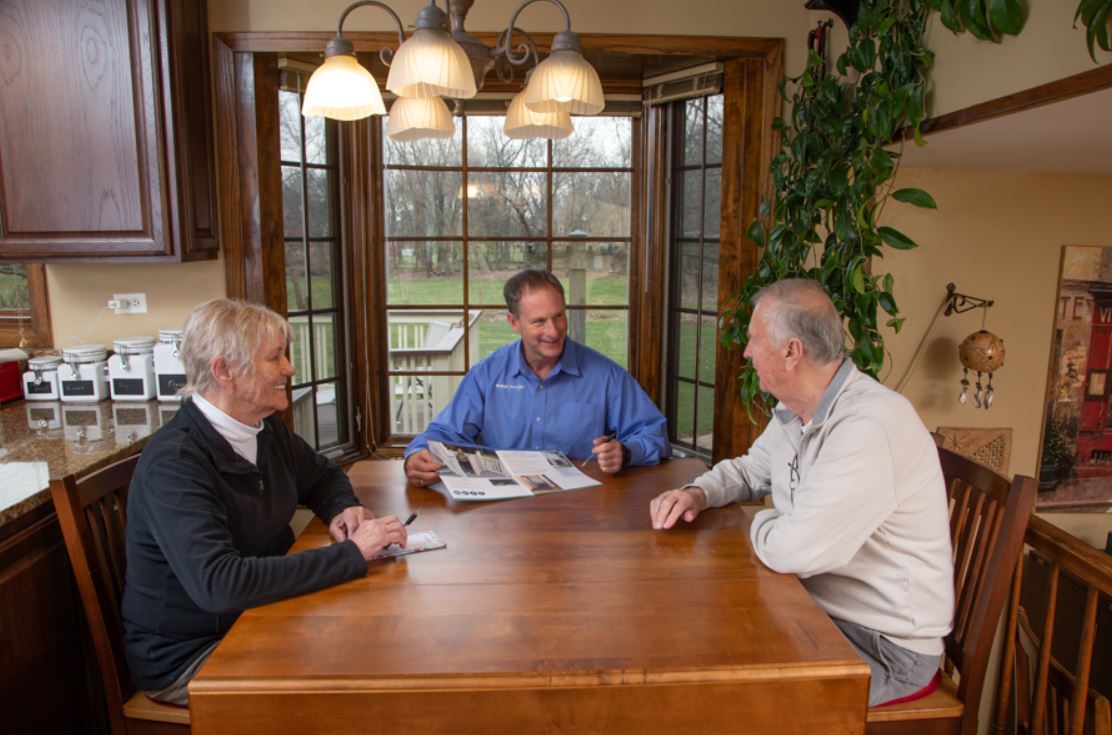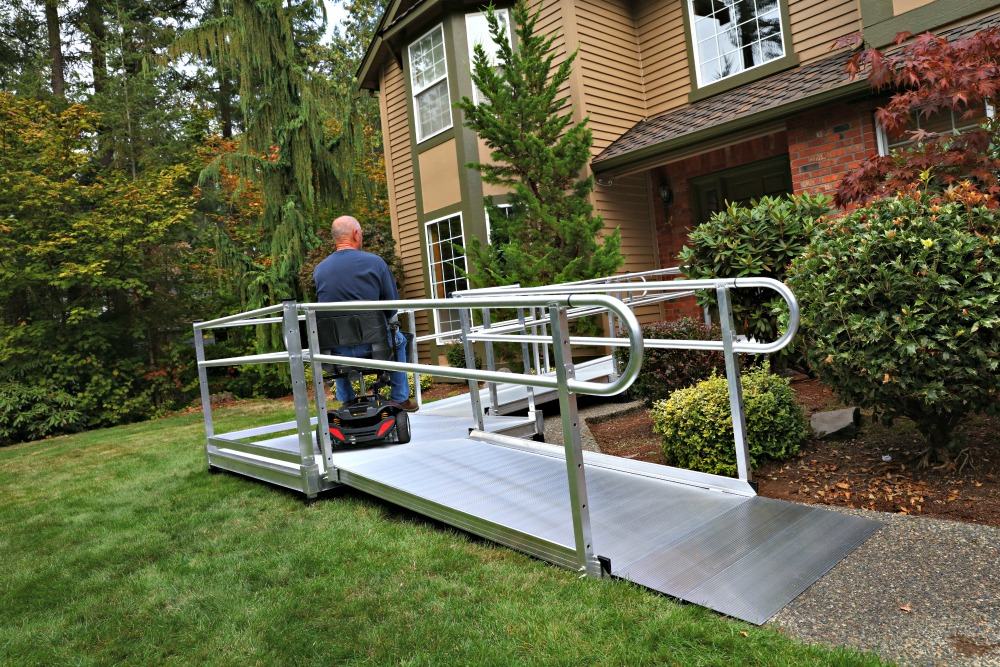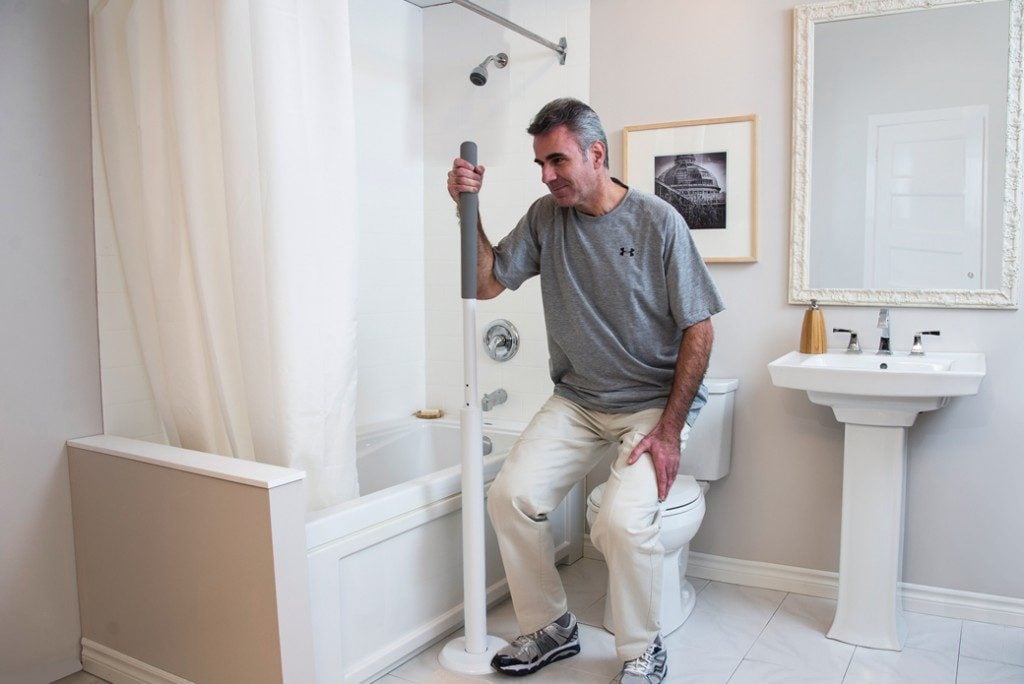Accessibility Solutions Help Discharged Patients Remain Safe at Home
Posted on by Amy Finke
Due to the pandemic, more patients with complex needs are being discharged directly home, which can cause challenges for healthcare facilities and patients. Home care and home access are part of the solution to help those with limited mobility remain in their homes safely and on parallel path to help minimize readmission.
 According to Kristine Lajeunesse, Owner of Always Best Care of Central CT, Inc., “We are seeing hospitals discharging fewer patients to skilled nursing facilities and more patients directly to the home. This results in patients with more complex needs going home. Home Care services are needed for more hours because the person needs more assistance.”
According to Kristine Lajeunesse, Owner of Always Best Care of Central CT, Inc., “We are seeing hospitals discharging fewer patients to skilled nursing facilities and more patients directly to the home. This results in patients with more complex needs going home. Home Care services are needed for more hours because the person needs more assistance.”
An accessibility assessment of the home environment followed by modifications such as grab bars, ramps, stair lifts, and tub cut-outs, can make the discharge-to-home process safer, reduce the risk of readmission, and make economic sense as well.
Patients Want to Go Home
 According to AARP, 3 out of 4 adults age 50 and older want to stay in their homes and communities as they age. Many patients are resisting skilled nursing facilities upon hospital discharge and opting for in-home care, both for fear of COVID-19 and the impact that increased safety precautions will have on their social and emotional well-being. While it is too soon to predict the permanent impact of COVID on the trend for patient direct discharge home, currently this is the more prevalent choice.
According to AARP, 3 out of 4 adults age 50 and older want to stay in their homes and communities as they age. Many patients are resisting skilled nursing facilities upon hospital discharge and opting for in-home care, both for fear of COVID-19 and the impact that increased safety precautions will have on their social and emotional well-being. While it is too soon to predict the permanent impact of COVID on the trend for patient direct discharge home, currently this is the more prevalent choice.
When asked about hospital discharge patterns, Adriana Leon, Care Continuum Liaison at Manchester Memorial Hospital in Connecticut, states: “Our objective is to keep the patient safe. We advise the patient that if there is not enough support at home they will need to go to short-term rehab. We are finding that patients do not want to go to short-term rehab, they want to go home.”
Hospitals Working with Accessibility Providers
 For those patients discharged directly home from the hospital setting, one concern is the increased risk of a falling, and as a result, increased risk of readmission. According to the Centers for Disease Control and Prevention, one out of every four older adults (age 65+) fall each year in the United States. Older adults are at a high risk of a fall after hospital discharge, and many homes do not match the physical needs of individuals with limited mobility. But many falls are preventable.
For those patients discharged directly home from the hospital setting, one concern is the increased risk of a falling, and as a result, increased risk of readmission. According to the Centers for Disease Control and Prevention, one out of every four older adults (age 65+) fall each year in the United States. Older adults are at a high risk of a fall after hospital discharge, and many homes do not match the physical needs of individuals with limited mobility. But many falls are preventable.
While hospital leadership continues to be focused on patient safety, the additional challenge of COVID has led to a modified approach to discharge. According to Dan Woloszyn, CEO of the Rehabilitation Hospital of Indiana, “the goal is always for the patient to go home. However, during the past year, the discharge plan was modified in ways to prevent community exposure and decrease emotional complications. This included shying away, as appropriate, from another transition to any long-term care facility. So, we needed to make the discharges to home meaningful and successful...Our Team at the Rehabilitation Hospital of Indiana used technology to virtually train proper techniques and provide education, while we would rely on our outside vendors to then supply equipment to make the transition home safe and successful.”
Home accessibility experts, with credentials such as CAPS and CEAC along with years of experience in the field, can make a valuable contribution to the process. Health care professionals are looking to Home Care and Home Access Solutions to help those at risk remain in their homes safely, and to reduce the risk of readmission.
Evaluations – Key to Preventing Falls at Home
 “A home safety assessment with individualized safety modifications in conjunction with an exercise program can reduce the likelihood of a fall and keep people at home,” says Tracy VanOss, clinical professor of Occupational Therapy at Quinnipiac University in Hamden, CT.
“A home safety assessment with individualized safety modifications in conjunction with an exercise program can reduce the likelihood of a fall and keep people at home,” says Tracy VanOss, clinical professor of Occupational Therapy at Quinnipiac University in Hamden, CT.
Combining a clinical evaluation of the patient along with a home evaluation by a home access expert can provide valuable information on the available home modification options. Choosing to go this route can be a cost-effective way to make the discharge-to-home process safer.
“Access ramps, stairlifts, grab bars and tub cut-outs are just a few examples of modifications that can increase safety and decrease fall risk for the patient at home,” according to Lifeway Mobility Chairman Tim Burfield. “Research is indicating that the benefits of home accessibility modifications may well exceed the cost.”
One example is the CAPABLE trial. Looking at an interdisciplinary program using a team of nurses, occupational therapists and home modifications, the effect of roughly $3,000 in program costs yielded more than $30,000 in savings in medical costs, driven by reductions in both inpatient and outpatient expenditures. (Source)
Hospital discharge planners and clinicians working together with home modification experts and home care professionals can make a big difference in increased safety, and therefore decreased risk of readmission for patients. Learn more about modifications to assist with:



About the Author & Lifeway Mobility
 Amy Finke, CAPS, CEAC
Amy Finke, CAPS, CEAC
VP of Business Development Lifeway Mobility
E-mail: amy@lifewaymobility.com
Lifeway Mobility is an accessibility solutions company serving individuals and businesses in Southern New England, Western Pennsylvania, the Midwest and California. Lifeway Mobility offers a full selection of accessibility and safety equipment to improve mobility and independence, including stairlifts, wheelchair lifts and ramps, home elevators, transfer lifts, and bath safety solutions.
